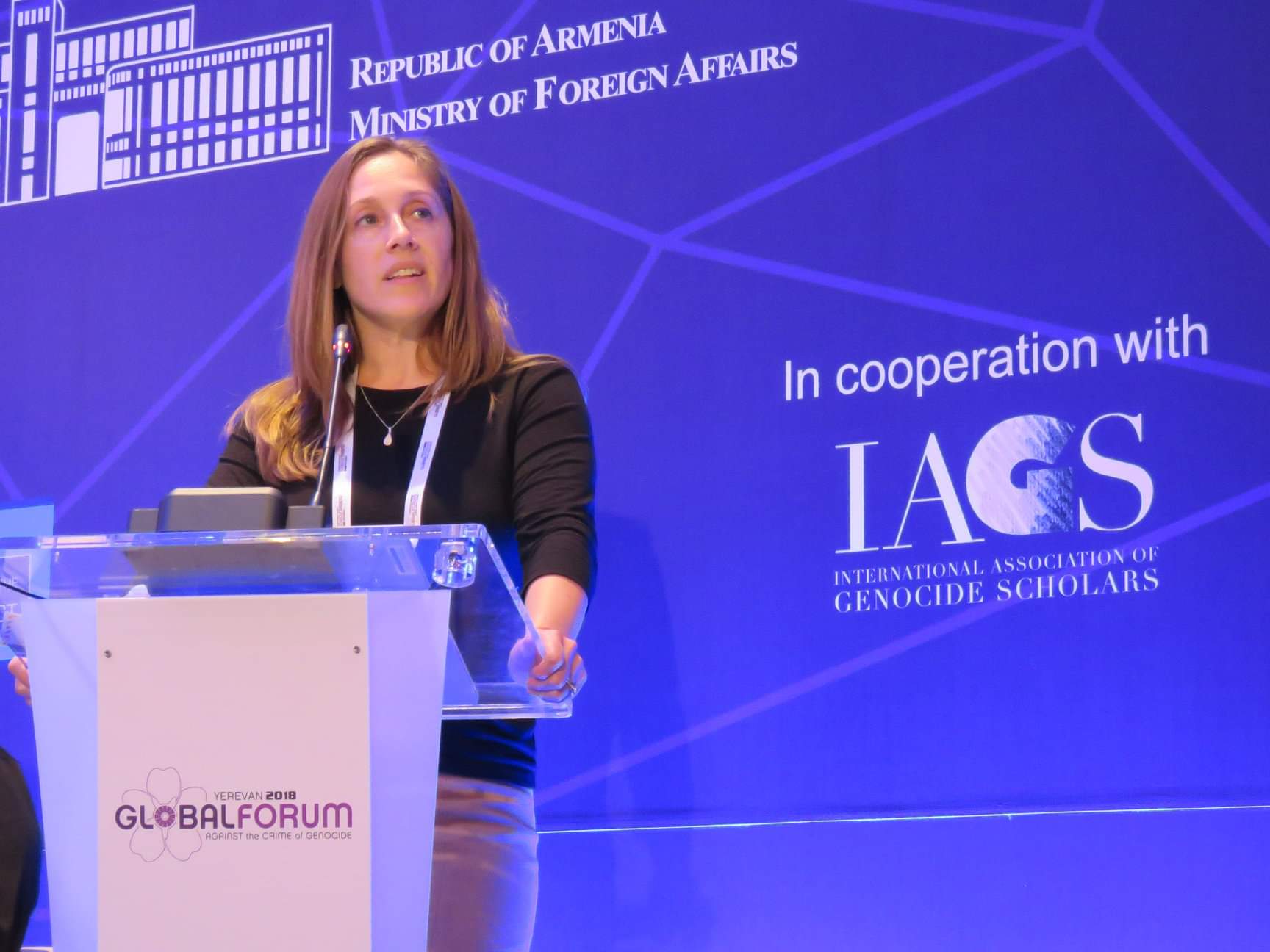Storytelling is a valuable tool in teaching about the dangers of genocide

 Sara Brown at the 3rd Global Forum Against the Crime of Genocide held earlier this month in Armenia.
Sara Brown at the 3rd Global Forum Against the Crime of Genocide held earlier this month in Armenia.Sara Brown, the Institute’s postdoctoral teaching fellow, said that storytelling and narrative are central to the human experience and are ancient ways societies preserve their historical record. In her remarks at the conference, she urged that educators use testimonies of genocide survivors to engage their students to learn how to resist dangerous stereotypes and to treat people with more respect and dignity.
“The influence of stories and personal narrative is particularly significant for effective and meaningful genocide education and activism,” Brown said. “And the over 55,000 audiovisual testimonies collected and housed in USC Shoah Foundation’s Visual History Archive provides educators a unique opportunity to access highly tellable narratives about lived experiences during genocide and other mass atrocities that can be used to educate students around the world.”
The event was held in Yerevan, Armenia. It is dedicated to the prevention of the crime of genocide through education, culture and museums. The Forum is organized by the Foreign Ministry of Armenia with the support of the UN Office on Genocide Prevention and the Responsibility to Protect and in cooperation with the International Association of Genocide Scholars.
Brown noted that courses that look into the causes and consequences of genocide are becoming more popular around the world, a move she found hopeful.
“The significance of the human story of genocide, going beyond the historical facts, chronology of events and casualties suffered cannot be overlooked by educators,” she said.
Using the Armenian Genocide as an example, Brown noted that the story of each victim is important.
“The Armenian Genocide was not the mass murder of over 1.5 million Armenians,” she said. “The Armenian Genocide was the murder one by one by one by one of over 1.5 million individuals. And each individual has a story that may help promote comprehension of the atrocities that occurred, the lessons that can be learned.”
She was also concerned that discrimination and antisemitism are on the rise.
“The need for meaningful and impactful instances of modern genocide is all the more pressing today,” she said. “We are witnessing a resurgence in xenophobia, bigotry and hatred, including antisemitic beliefs.”
But she said the rising tide of hatred can be pushed back by using testimony in the classroom.
“Interaction with the Visual History Archive has been found through studies to engage learners at the cognitive, moral and affective levels,” she said. “It fosters an interest in historic topics, which is great for me as a historian, but also increases critical-thinking skills. Teaching with testimony provides students with the necessary tools to resist the us-vs.-them paradigm identified by genocide scholars as necessary to bring about the social death of a group and other dehumanizing tactics often employed by extremists.”
Noting that USC Shoah Foundation offers several ways to bring testimony to students, Brown said that students have to learn how to embrace differences in others instead of rejecting them.
“The interpersonal connection and emotional investment that accompany these in-person and virtual interactions with survivors and witnesses to genocide help students overcome apathy, polarizing influences in their own lives, and helps them close the psychological distance between them and the victim or survivor,” she said. “And it gives a human story to statistics that document the suffering.”